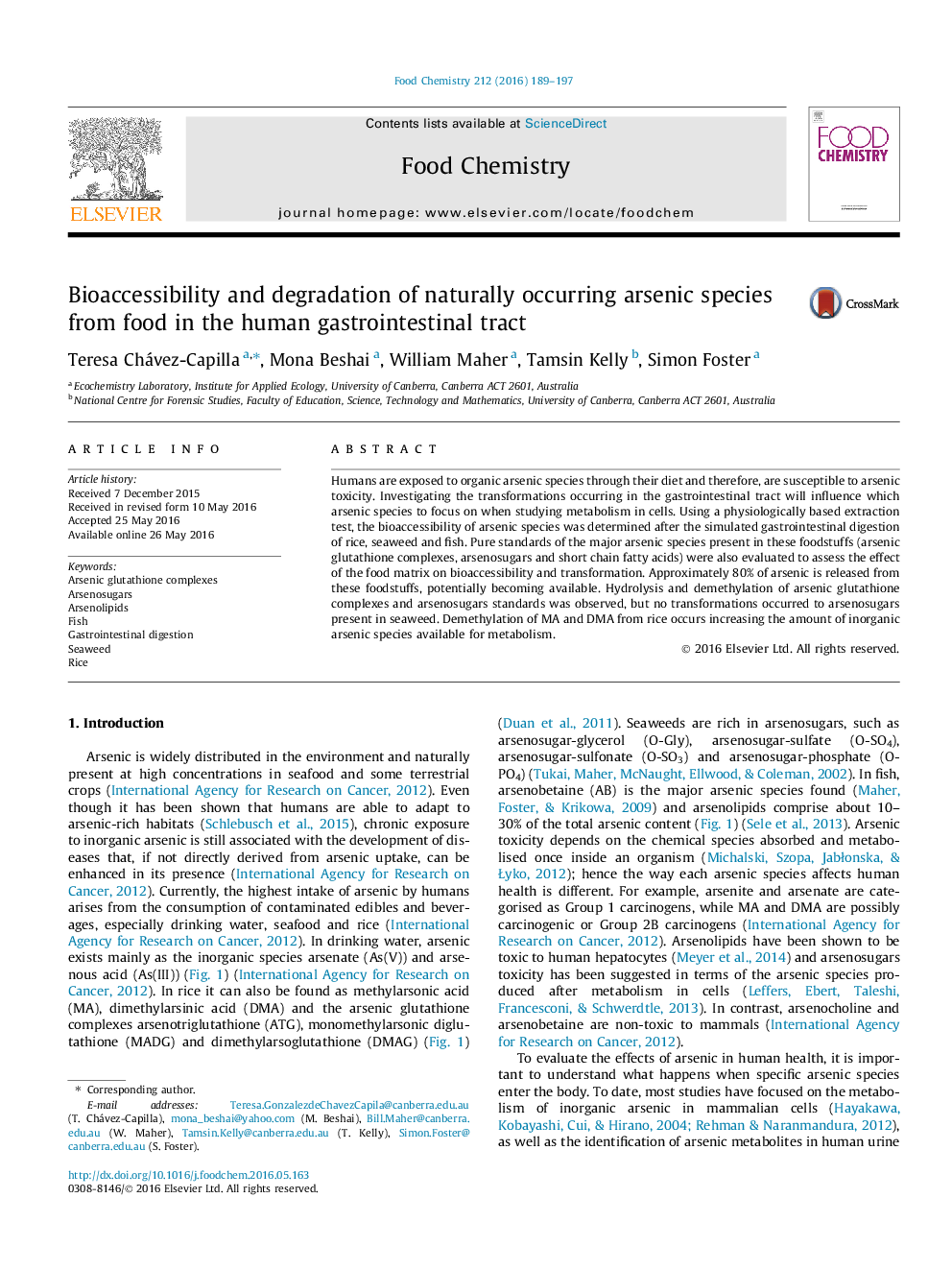| Article ID | Journal | Published Year | Pages | File Type |
|---|---|---|---|---|
| 1185038 | Food Chemistry | 2016 | 9 Pages |
•Bioaccessibility of arsenic in rice, seaweed and fish occurs mainly in the stomach.•Arsenosugars are degraded in the gastrointestinal tract but when ingested from seaweed they remain unchanged.•The toxicity of arsenic in rice is increased in the gastrointestinal tract.•Chemical demethylation of arsenic species is likely to occur in humans.•A mechanism for arsenosugar degradation is suggested.
Humans are exposed to organic arsenic species through their diet and therefore, are susceptible to arsenic toxicity. Investigating the transformations occurring in the gastrointestinal tract will influence which arsenic species to focus on when studying metabolism in cells. Using a physiologically based extraction test, the bioaccessibility of arsenic species was determined after the simulated gastrointestinal digestion of rice, seaweed and fish. Pure standards of the major arsenic species present in these foodstuffs (arsenic glutathione complexes, arsenosugars and short chain fatty acids) were also evaluated to assess the effect of the food matrix on bioaccessibility and transformation. Approximately 80% of arsenic is released from these foodstuffs, potentially becoming available. Hydrolysis and demethylation of arsenic glutathione complexes and arsenosugars standards was observed, but no transformations occurred to arsenosugars present in seaweed. Demethylation of MA and DMA from rice occurs increasing the amount of inorganic arsenic species available for metabolism.
